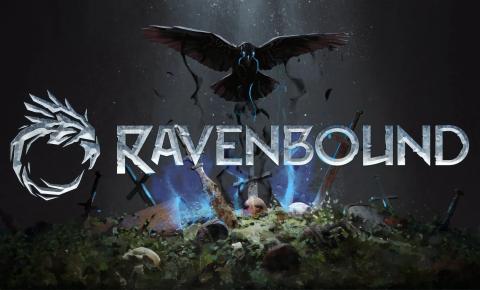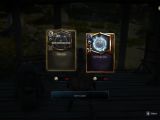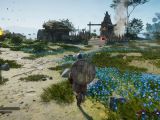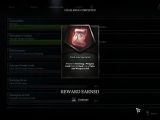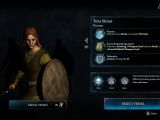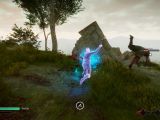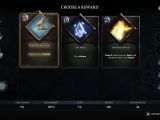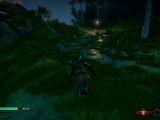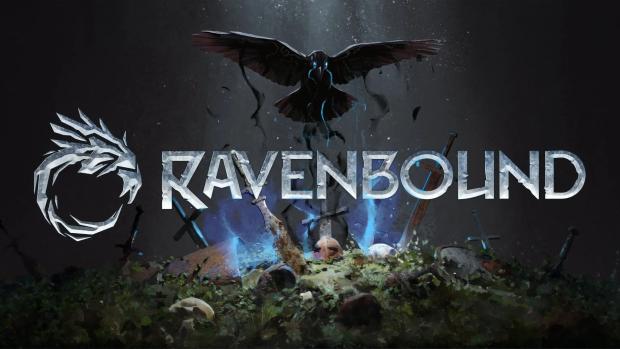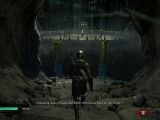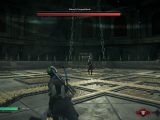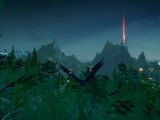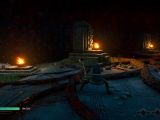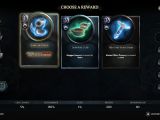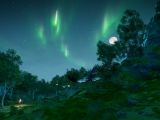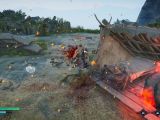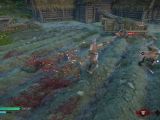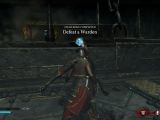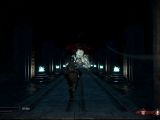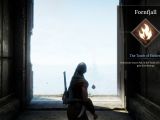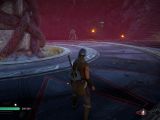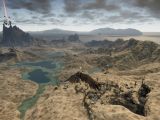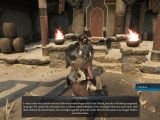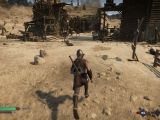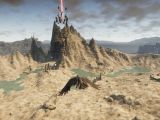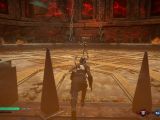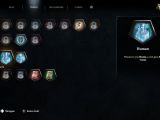Ravenbound is one of those unusual roguelites that can become frustrating very fast if you don’t play it by its rules. Developed by Systemic Reaction, the game is set in a fantasy world inspired by Scandinavian folklore where you play as the Vessel of an ancient power.
Just like in many other roguelites, ever time you die, you retain some of the advantages that you unlocked during your previous runs. After a pretty in-depth combat tutorial, you’re thrown into Avalt, a world that’s been corrupted by a God. Taking the shape of a Raven to navigate the world faster, you must vanquish camps of monsters, upgrade your gear, and take on the warden of that biome.
There are several biomes in the game, each with a boss at the end, which you must kill to progress to the next biome. There are no additional lives in Ravenbound, once you’re killed, you stay dead. Also, there are no health potions that you can actually use during combat, but you can purchase healing from vendors that are found either throughout the world on inside settlements.
Thanks to an in-depth tutorial, Ravenbound does a good job at explaining all the combat mechanics, although the synergies and hit combos remains for each player to discover. However, the game only lightly touches the rules of the world, which makes it extremely frustrating until you understand how it wants you to play it.
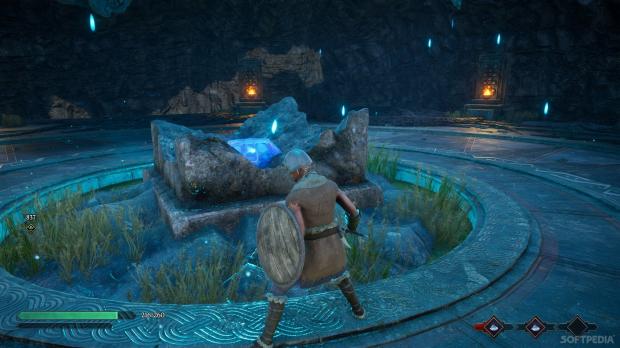
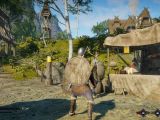
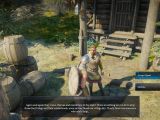
There are many mechanics hidden underneath the game’s traditional roguelite traits, most of them not even showing up until the latter stages. It’s hard to tell which are the most important ones, suffice to say that they require a deep understanding in order to be successful or at least have an enjoyable experience.
What makes Ravenbound stand out from other action games is that its upgrade system is based on cards that you can find throughout the world. Each camp with monsters guard a chest that usually contains an item or an ability/gear upgrade. These come in the form of cards that you can choose to use for mana, keep until you have enough mana, or simply consume them to make room for new ones.
Although you start as human, the game has a few more races and several classes that you must unlock. Each class and race have their own strengths and weaknesses. For example, humans gain 50 gold whenever they consume a card, which assures you that you always have money for healing.
All progression in the game comes in the forms of cars. Each run new cards are unlocked, so as you grow stronger, so do the rewards. Card that you can find in camps or by merging shards dropped by monsters range from better armor to new playable classes, magical weapons, and relics that significantly enhance your character. However, it remains for you to find the different synergies.
Every time you open a chest or merge shards you are presented with three cards that you can choose from. To actually gain a card’s benefits, you must spend mana. Mana can also be found in special chests and inside special locations. The better a card is, the higher its mana cost. Regardless of whether you used a card during a run, that card will be unlocked for your future runs and might pop up again.
Many cards are locked behind challenges, but once you achieve those challenges, the cards will be permanently unlocked. Another interesting mechanic that is not explained in the game is how cards and enemy types are linked to five elements: Sky, Earth, Ice, Fire, and Spirit. Many builds are based on certain types of damage, so if you want to create a build around Ice, you’ll have to fight certain enemies that have a higher chance to drop cards of that type of element.
But the most important mechanic in the game is called “Hatred,” which is only lightly explained. The majority of the loots chests in the world are affected by Hatred and have a red mist around them. Before they can be opened, you must absorb their Hatred. Once you do that, you gain a temporary hatred fragment, which can be merged with other fragments that you picked up from killing monsters.
Once the fragments are merged, depending on how many were temporary hatred fragments, you’re presented with that number of hatred cards that have negative effects on the game world. Basically, the enemies will be more powerful. As you build up Hatred by merging fragments and looting chests, the hatred gauge will fill up until a slot will be locked to Permanent Hatred. This means that every time you merge fragments, one of the rewards will be a Permanent Hatred card.
While temporary hatred fragments are removed when you merge fragment, permanent hatred can only be removed by killing the warden of that area. Only one slot of permanent hatred will be removed when you kill the boss though. It’s in interesting system that, unfortunately, discourages players from exploring more of one area unless they risk of empowering the enemies too much.
The Hatred system has probably been implemented that way to prevent players from becoming too powerful before engaging the warden of an area. The reasoning seem logical but the implementation is awkward to say the least.
The first minutes after stepping into the world of Avalt are definitely overwhelming. The world seen from a raven’s eye seems huge and it really is. Once you’re no longer flying, it becomes obvious that the open-world is quite empty except from the rare monster camps that you must vanquish.
The fact that your character can turn into a raven to cross bigger distances faster is a nice addition to the game, but I find it absurd that you can only do that from certain location in the game. This is more obvious in the second biomes where so-called Raven Towers are few and between making traversal frustratingly boring.
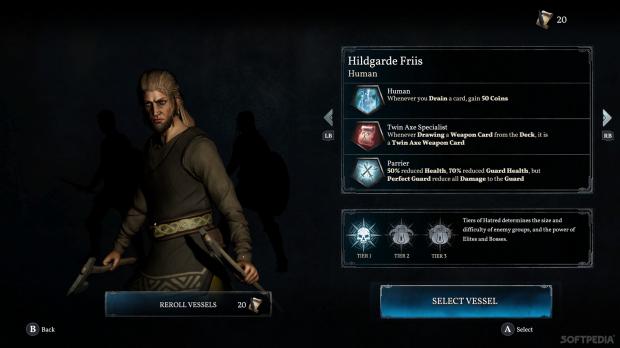
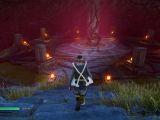
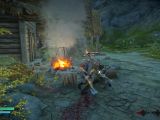
The Good
- Flying as a Raven is smooth and satisfying
- Interesting progression system based on cards
- Varied monsters
- Great worldbuilding
The Bad
- Terrible camera during combat
- Hatred system
- Empty world
- Technical issues
Conclusion
On top of that, the game has some technical issues like crashes and challenges/quests not updating correctly. There have been a few times when I was in the middle of a fight and the game simply crashed to desktop. Fortunately, I was able to continue my adventure from where I left off.
I think Ravenbound has a solid foundation as a roguelite, but it’s buried underneath some mechanics that aren’t enjoyable enough to keep you engaged. Also, if you’re one those people who don’t like “always online” games, skip this one because you won’t be able to play Ravenbound otherwise.
Review key was provided by the publisher.
 14 DAY TRIAL //
14 DAY TRIAL // 